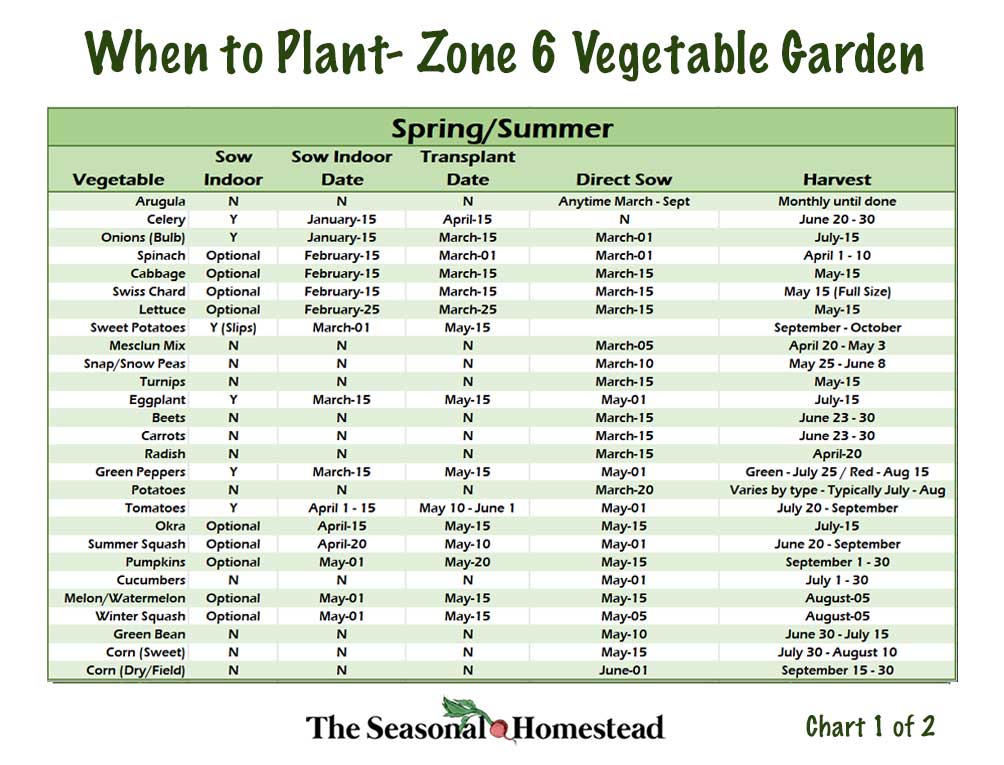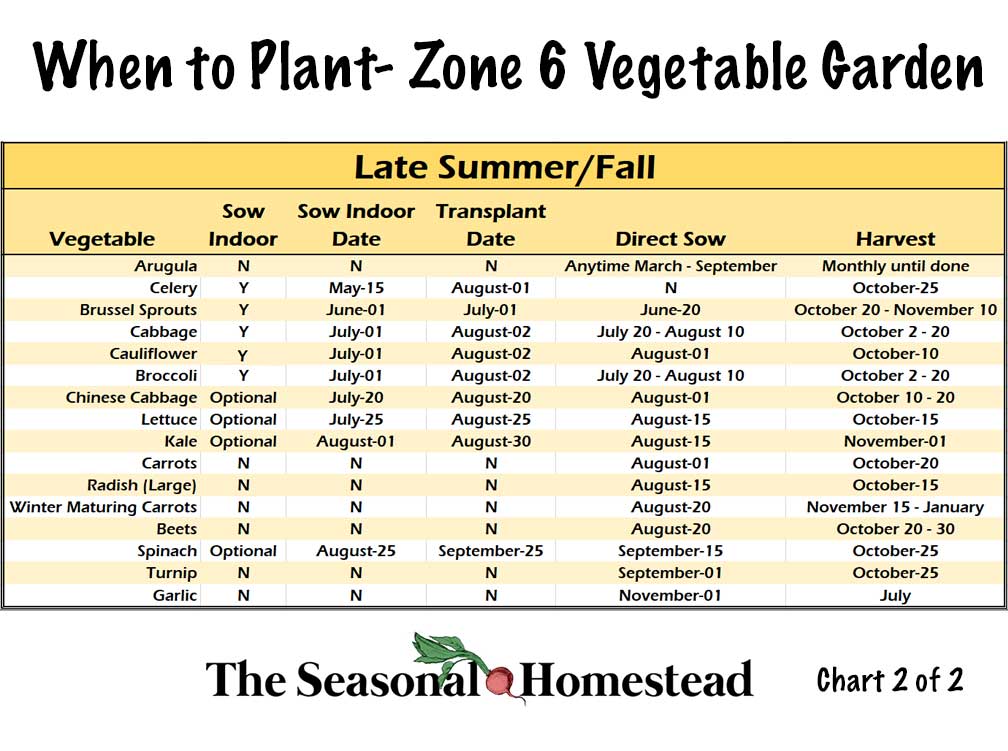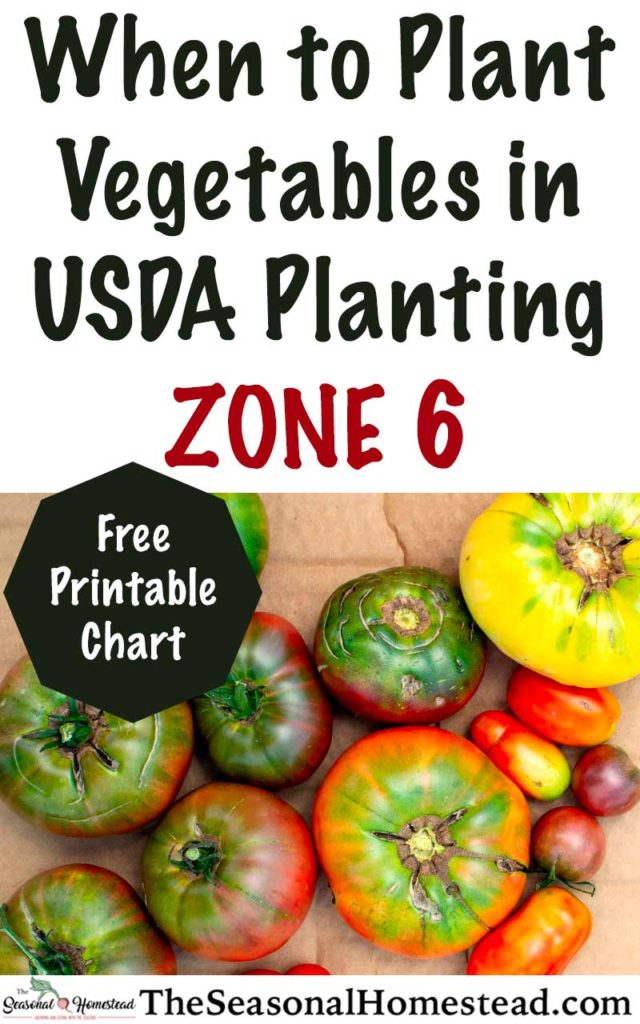When to Plant Vegetables in Zone 6
I finally did it. After many years of tweaking planting times and dates, I made a chart of when plant vegetables in zone 6. It includes dates sow seeds indoors, transplant and direct sow vegetables into the garden.
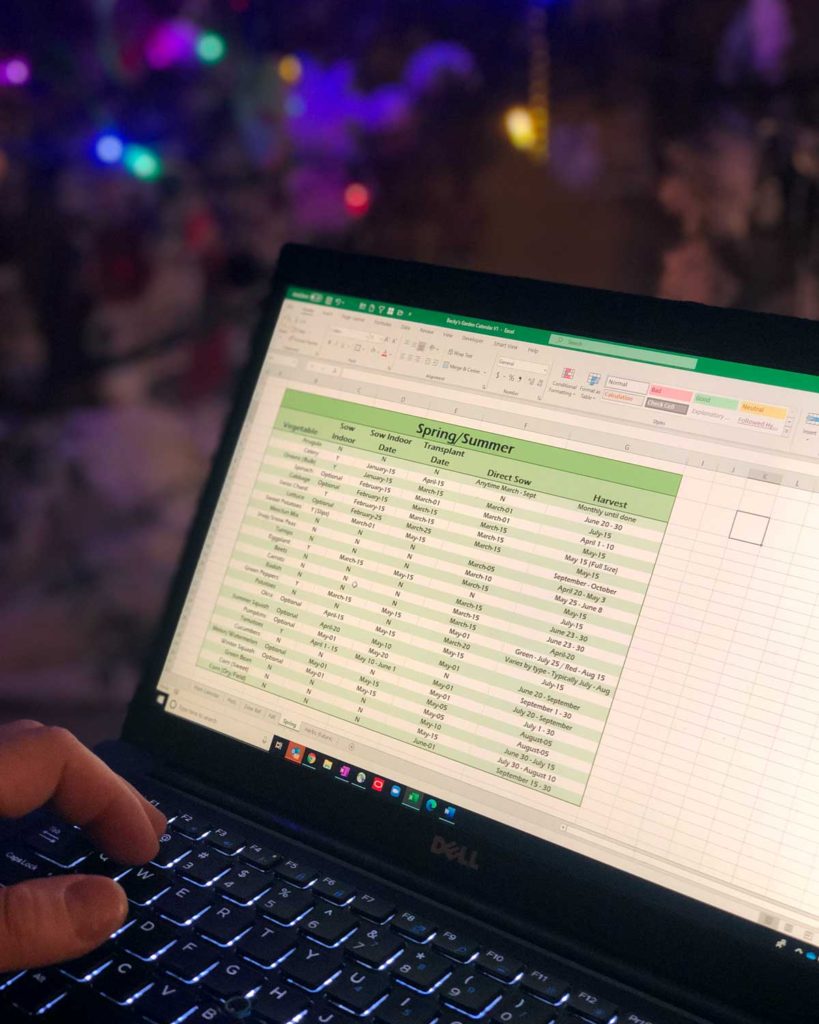
With so many requests from you all on when exactly to plant for a zone 6 garden, I finally buckled down and made a printable chart of when to plant vegetables in zone 6. But I also had help from Cameron who is amazing at Excel and helped me to input and organize all the dates. I’m so excited because this is going to help me stay organized this year too!
This post contains affiliate links. Here is the full disclosure.
I have specifically tailored the planting dates to my exact climate conditions in Zone 6 (I am in 6b to be exact). However, within zone 6 your average last frost date may vary a bit from mine. My average last frost date for my area is April 24th.
Depending on your average last frost date you may want to slide all the dates I use for planting forward or backward.
Please note, there is a reason behind all the dates I use. And before you check it out and start to question some of the dates, I’ll explain why I plant when I do.
I am in the southeast and have to think about how to combat plant problems like disease and pests naturally. In order to reduce diseases, I plant tomatoes, peppers, corn, squash, and melons at least two weeks past my last frost date, sometimes later. Even in an unseasonably warm year, I follow this rule and it has served me very well.
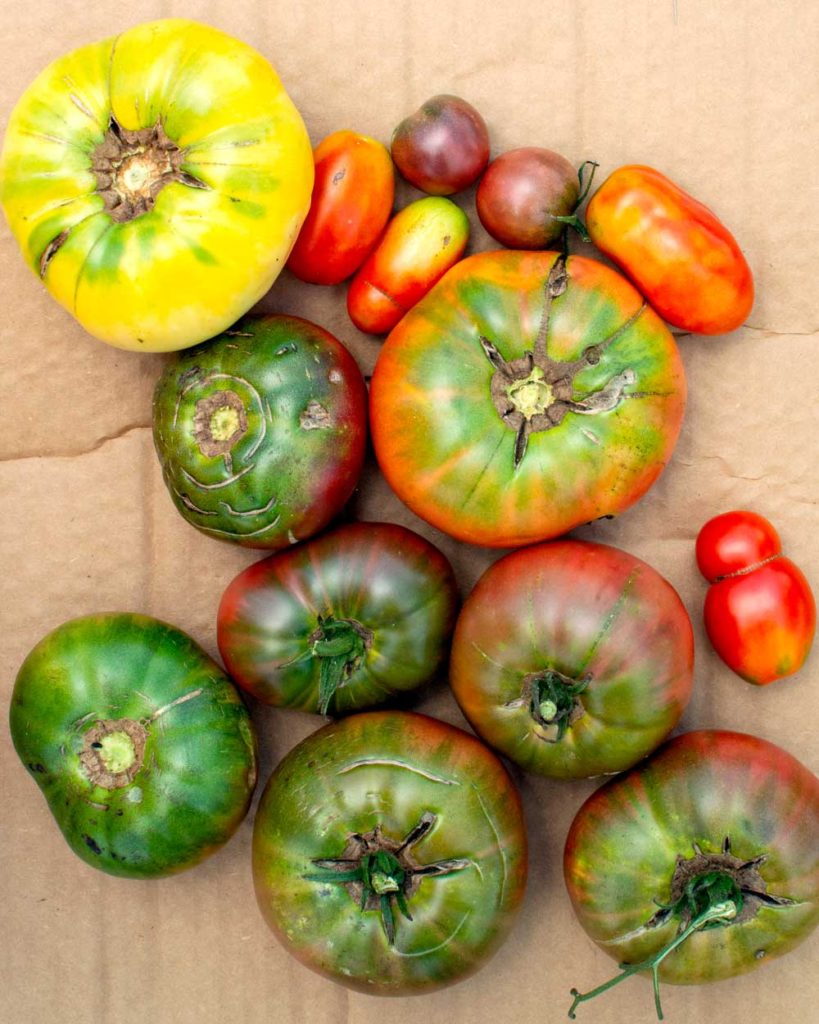
Many people will tell you to plant a little earlier or you will feel behind (I always do). Remind yourself that patience is worth the reward. Planting warm season crops a little later not only helps you to reduce disease pressure but also helps you to avoid flooding, hail, and cold snaps which are more common in the Spring.
Pssst… for my friends in colder zones: If you plan on adjusting these dates to work with your zone make sure you have enough time for your warm season crops to mature. I have plenty of time to wait a few weeks to plant where I live but you may not and will need to start closer to your average last frost date. If you plant under a low tunnel or in a greenhouse you can avoid some of mother nature’s surprises.
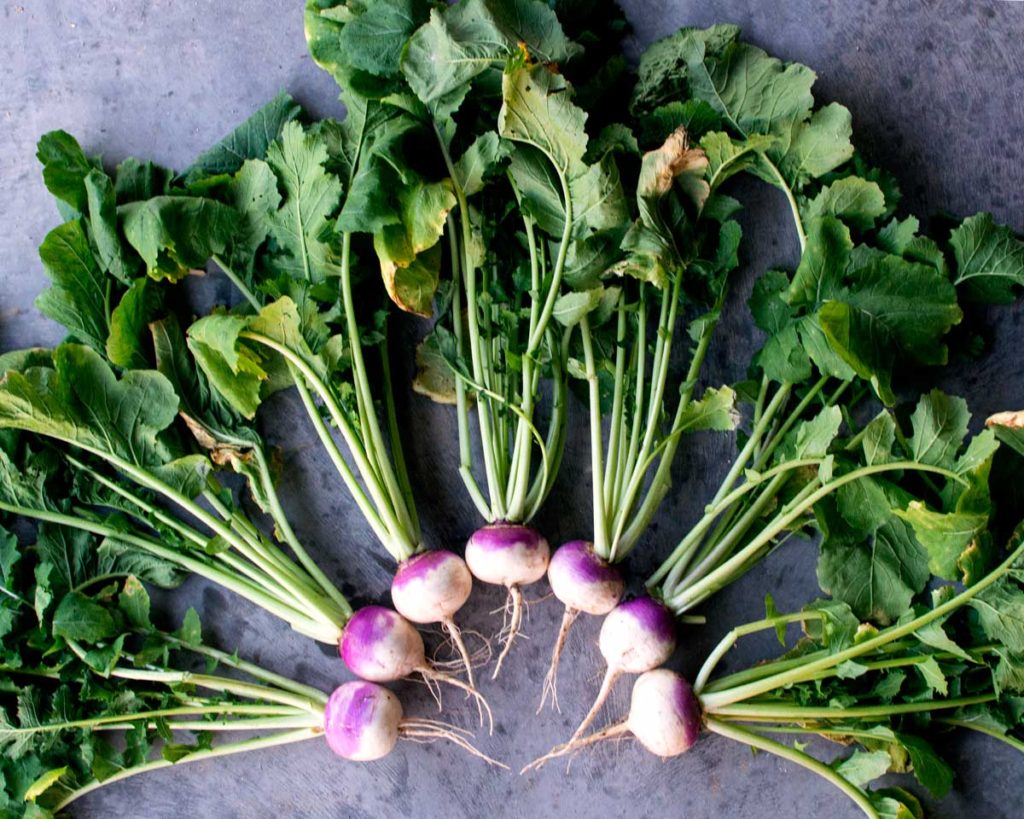
Other plants like cabbage, spinach, kale, lettuce, and radishes, I sow very early in the season in order to avoid cabbage worms, bolting, and bitter greens.
Lettuce, cabbage, mesclun mix, and kale I plant under protection of a row cover or clear plastic in Spring (if you use plastic, opening the tunnel on warm days is a must). My dates in Spring for these crops are based on using row cover. I think you would be fine without it too, but if you’re nervous about it wait and extra week or two.
One last disclaimer 🙂 This chart will be constantly evolving and changing. Every year, I tweak things just a little. I will update it here if I make improvements. Feel free to use this as a starting place and then tweak to your specific needs.
Alternative Option For Super Easy Crop Planning! (updated 2025):
I have recently been trying out a different way of crop planning, via a computer program, called Seedtime. At first I was skeptical, but it’s actually way cooler than I initially thought! It’s also FREE to sign up! If you want added features, like 20% off seeds and access to all the abilities it has, there is a paid version too.
April 1, 2025 update: If you want to visually learn, step by step, we have a recording of a class we did that shows all the features of this garden planner. It’s a great way to see what is possible. There is a special discounted offer at the end (offer ends April 7, 2025!) Check it out there are so many awesome features! : Free online class replay
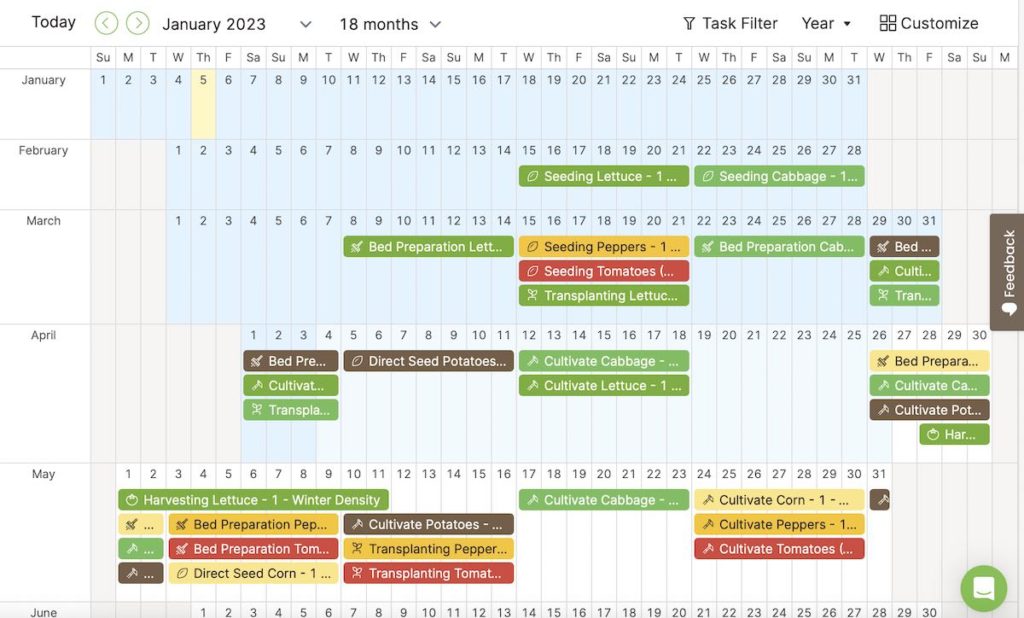
You put in your zone, your zip code, and what your planting (including variety) and it plans out your calendar for you. So you can see when to seed indoors, when to transplant, when to cultivate, and when you’ll be harvesting. Then you print out your calendar. Super awesome and easy to use for a beginner. Definitely check it out if you want to take the work away. Check out Seedtime calendar and layout.
One Final Caveat *PLEASE READ
It’s been several years since I originally put up this printable chart (found below). Over the years I’ve come to a major realization of a flaw.
Even the same type of vegetable can have varying maturity times. This is critical in the fall to make sure the crop matures in time.
Take for example carrots. I have an heirloom carrot that I grow in fall and it takes 75 days to mature. Another carrot Napoli, a fast growing hybrid takes about 50 days to mature.
Therefore the chart is flawed because I give one date that doesn’t account for varying days to maturity. You wouldn’t want to plant those at the same time.
You can still use the chart as a good estimated guide but keep in mind it may not be exact.
If you don’t want to use a planning tool, I have recommendations on how to figure out harvest dates for the fall in my post when to plant for a fall vegetable garden.
Chart Key for when to plant zone 6
- Y= Yes
- N= No
- Sow indoors= grow in soil blocks (preferred) or trays with seed starting soil under lights indoors. You can also start plants outdoors with soil blocks or in trays in a greenhouse.
- Transplant= The day when you will move your soil blocks from indoors to outdoors to plant. Prior to this day, you’ll need to harden off your plants by getting them used to the outdoors. Take them outside for 30 minutes to an hour the first day and incrementally add more time with each following day until they are used to being outside in the elements. I usually allow at least a week for this process. Plants like tomatoes and peppers require two weeks of harden off time.
- Direct Sow= Plant seeds directly in the garden outdoors.
- Harvest= Harvest time is incredibly variable based on what varieties you grow. I added this in so you could get an idea of when plants are finished being harvested. I highly recommend succession planting another vegetable or a cover crop immediately following the end of the harvest of each vegetable.
Additional Important Notes – When to Plant Vegetables in Zone 6 Chart:
Vegetables are ordered as best I could by date when you’ll need to get started on a vegetable, whether that be sow indoors or direct sown.
Throughout the chart I say “Y” or Yes for sowing indoors but also provide a direct sow date. This is because sowing indoors is my preferred method but of course mother nature always direct sows! Haha! Therefore, this a possibility if you choose and a date is provided.
